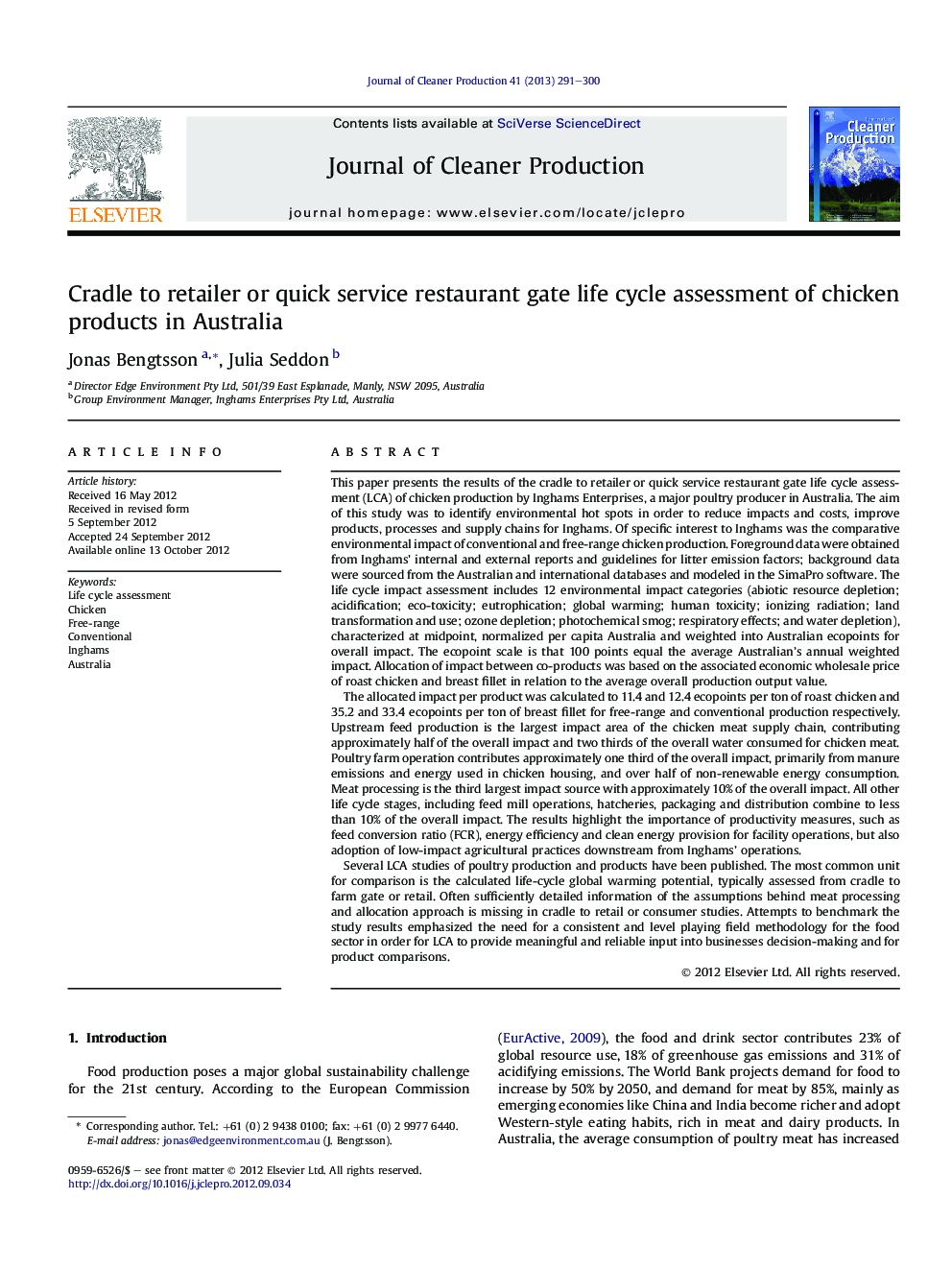| کد مقاله | کد نشریه | سال انتشار | مقاله انگلیسی | نسخه تمام متن |
|---|---|---|---|---|
| 1745550 | 1522205 | 2013 | 10 صفحه PDF | دانلود رایگان |

This paper presents the results of the cradle to retailer or quick service restaurant gate life cycle assessment (LCA) of chicken production by Inghams Enterprises, a major poultry producer in Australia. The aim of this study was to identify environmental hot spots in order to reduce impacts and costs, improve products, processes and supply chains for Inghams. Of specific interest to Inghams was the comparative environmental impact of conventional and free-range chicken production. Foreground data were obtained from Inghams' internal and external reports and guidelines for litter emission factors; background data were sourced from the Australian and international databases and modeled in the SimaPro software. The life cycle impact assessment includes 12 environmental impact categories (abiotic resource depletion; acidification; eco-toxicity; eutrophication; global warming; human toxicity; ionizing radiation; land transformation and use; ozone depletion; photochemical smog; respiratory effects; and water depletion), characterized at midpoint, normalized per capita Australia and weighted into Australian ecopoints for overall impact. The ecopoint scale is that 100 points equal the average Australian's annual weighted impact. Allocation of impact between co-products was based on the associated economic wholesale price of roast chicken and breast fillet in relation to the average overall production output value.The allocated impact per product was calculated to 11.4 and 12.4 ecopoints per ton of roast chicken and 35.2 and 33.4 ecopoints per ton of breast fillet for free-range and conventional production respectively. Upstream feed production is the largest impact area of the chicken meat supply chain, contributing approximately half of the overall impact and two thirds of the overall water consumed for chicken meat. Poultry farm operation contributes approximately one third of the overall impact, primarily from manure emissions and energy used in chicken housing, and over half of non-renewable energy consumption. Meat processing is the third largest impact source with approximately 10% of the overall impact. All other life cycle stages, including feed mill operations, hatcheries, packaging and distribution combine to less than 10% of the overall impact. The results highlight the importance of productivity measures, such as feed conversion ratio (FCR), energy efficiency and clean energy provision for facility operations, but also adoption of low-impact agricultural practices downstream from Inghams' operations.Several LCA studies of poultry production and products have been published. The most common unit for comparison is the calculated life-cycle global warming potential, typically assessed from cradle to farm gate or retail. Often sufficiently detailed information of the assumptions behind meat processing and allocation approach is missing in cradle to retail or consumer studies. Attempts to benchmark the study results emphasized the need for a consistent and level playing field methodology for the food sector in order for LCA to provide meaningful and reliable input into businesses decision-making and for product comparisons.
Journal: Journal of Cleaner Production - Volume 41, February 2013, Pages 291–300